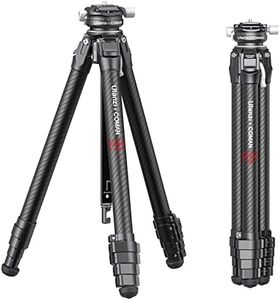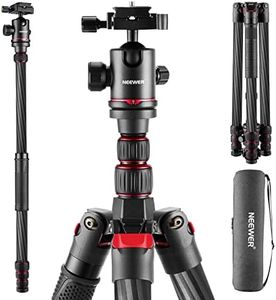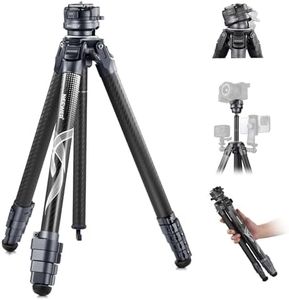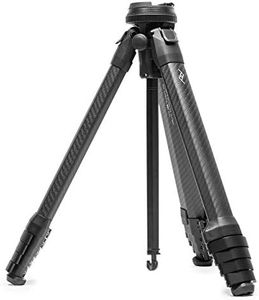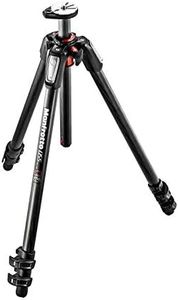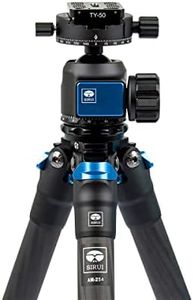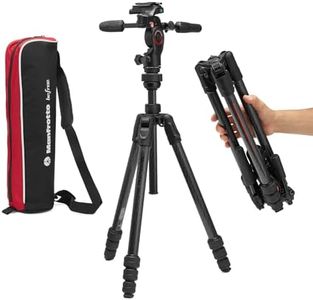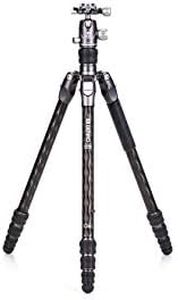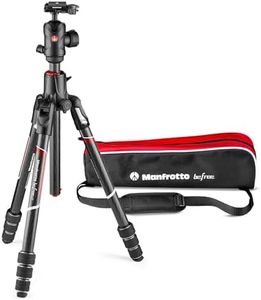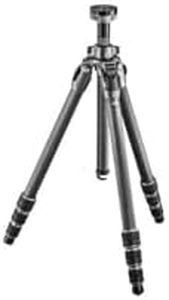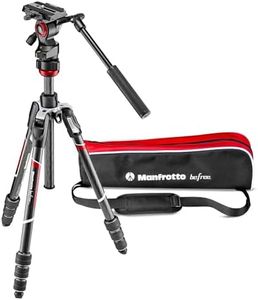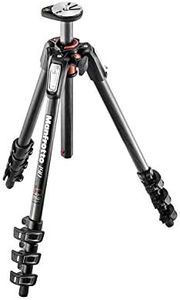We Use CookiesWe use cookies to enhance the security, performance,
functionality and for analytical and promotional activities. By continuing to browse this site you
are agreeing to our privacy policy
10 Best Carbon Fiber Travel Tripods
From leading brands and best sellers available on the web.Buying Guide for the Best Carbon Fiber Travel Tripods
Choosing a carbon fiber travel tripod can significantly enhance your photography experience, especially if you’re often on the move. These tripods are popular because they offer a blend of strength, light weight, and stability, making them ideal companions for travelers and outdoor enthusiasts. When considering a carbon fiber travel tripod, think about your typical shooting scenarios, how far you need to carry your gear, and what kind of camera equipment you plan to use. The right tripod should be easy to carry, quick to set up, and sturdy enough to keep your camera secure in various conditions.WeightWeight refers to how heavy the tripod is when you carry it around. This is important because one of the main reasons people pick carbon fiber tripods is their lightness compared to metal ones. Generally, lighter tripods are easier to pack and carry, making them better for hiking or international travel. However, if a tripod is too light, it might become less stable, especially in windy conditions. Tripod weights typically range from under 1 kg (super light, great for minimalists) to about 2 kg (more stable, but still portable). To pick what's right for you, think about how much walking or flying you do; if you need to save every gram, go lighter, but for more stability with heavier cameras, consider something a bit heavier.
Maximum Load CapacityMaximum load capacity is the highest weight the tripod can safely support, including your camera and any lenses or accessories. This matters because if your tripod isn’t strong enough for your setup, your camera might wobble or even fall. Load capacities often range from around 4 kg up to 15 kg or more. Lighter, travel-oriented tripods may have lower capacities and are best for smaller cameras, while higher capacities are needed for big DSLRs or telephoto lenses. To decide, add up the weight of your heaviest camera and lens combination and pick a tripod that supports at least that amount, preferably with some extra margin for stability.
Folded LengthFolded length indicates how small the tripod becomes when you close all its legs and pack it up. This is crucial if you have limited packing space, like in carry-on luggage or small backpacks. Folded lengths usually range from about 30 cm (very compact) to around 45 cm (more substantial but still portable). The shorter the folded length, the easier it is to store and carry, but sometimes this can mean sacrificing height. If you need your tripod to fit inside your bag rather than strapped outside, look for a shorter folded length, but make sure it still extends tall enough for your needs when in use.
Maximum HeightMaximum height is how tall the tripod stands when fully extended, including the center column. Taller tripods let you shoot at or above eye level—useful for comfort and for certain types of shots. Maximum heights can range from about 100 cm (travel ultra-light) to over 160 cm (standard standing height). If you frequently shoot standing up, a taller tripod can prevent back strain. If you’re okay with crouching or shooting lower angles to save on size and weight, a shorter tripod might suffice. Evaluate what kinds of photos you typically take and your preferred working height to guide your choice.
Number of Leg SectionsThe number of leg sections refers to how many segments each leg of the tripod has, which affects how small it collapses and how fast it is to set up. More sections (like 5 or 6) allow the tripod to fold down smaller, good for travel, but each added section can reduce stability slightly and may take longer to set up. Fewer sections (3 or 4) usually give more stability and faster setup, but the tripod may not fold as compactly. If packability is your top priority, more sections can help, but if stability and speed matter more, go for fewer.
Locking MechanismThe locking mechanism is the way the tripod legs are secured at your desired length, typically via twist locks or flip locks. Twist locks are sleeker and often preferred for travel because they don’t catch on other gear, but can be slightly slower to adjust. Flip locks are quick and very secure, but can be bulkier and sometimes catch on straps or clothing. When choosing, consider whether speed or slimness is more important to you, and if you have any preferences based on comfort or ease of use, as some photographers have strong likes or dislikes between these types.
